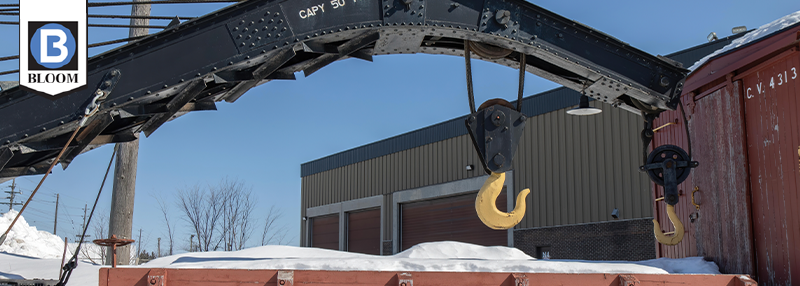
As the temperatures drop and winter sets in, winching operations in cold weather present unique challenges. From maintaining equipment efficiency to ensuring operator safety, it's crucial to be well-prepared for winching tasks in freezing conditions. In this blog, we have provided essential tips to help ensure that you have safe and efficient winching operations this winter.
Tips for Preparing Before Winching:
-
Cold-Weather Gear Inspection:
-
Before starting any winching operation, inspect all gear thoroughly, paying special attention to cables, hooks, and straps. Cold weather can make materials more brittle, increasing the risk of breakage.
-
Lubrication and Greasing:
-
Ensure all moving parts, including winch gears and cables, are well-lubricated. Use a low-temperature grease to prevent freezing and maintain smooth operation.
-
Battery Health Check:
-
Cold temperatures can affect battery performance. Before winching, check the battery's charge and ensure it's in optimal condition. Consider using a battery blanket or insulator to maintain a consistent temperature.
-
Antifreeze for Hydraulic Systems:
-
If your winch operates on a hydraulic system, make sure the hydraulic fluid is equipped with antifreeze properties. This prevents fluid thickening and maintains the winch's efficiency.
-
Emergency Kit Preparation:
-
As a precaution, assemble an emergency kit containing essentials like warm clothing, blankets, and a first aid kit. In case of unexpected delays or issues, having these items on hand can be crucial.
Tips for Ensuring Safety and Efficiency While Winching:
-
Consistent Monitoring:
-
Regularly monitor the winching operation, paying attention to any unusual sounds or vibrations. Cold weather can amplify stress on equipment, making it essential to catch potential issues early.
-
Slow and Steady:
-
Cold temperatures can make materials more rigid. Opt for slower winching speeds to reduce stress on cables and other components, minimizing the risk of breakage.
-
Cable Management:
-
While winching, keep an eye on the cable to prevent it from freezing. Gently shake or move the cable periodically to ensure flexibility and prevent ice buildup.
Additional Safety and Maintenance Tips:
-
Operator Safety Measures:
-
Dress in layers to stay warm and maintain flexibility. Wear insulated gloves to protect hands from cold surfaces and consider using hand warmers for added comfort.
-
Regular Equipment Checks:
-
Conduct regular checks on winch components during breaks in the operation. Ensure cables are free from ice, inspect hooks for signs of stress, and address any issues promptly.
-
Post-Operation Maintenance:
-
After completing winching operations, thoroughly inspect all equipment for wear and tear. Clean and lubricate moving parts to prevent corrosion, and store gear in a warm, dry place.
-
Weather Monitoring:
-
Stay updated on weather conditions throughout the operation. Sudden drops in temperature or unforeseen weather changes can impact equipment performance.
Winching in cold weather demands careful preparation, vigilant monitoring, and proactive maintenance. By following these essential tips before, during, and after winching operations, you can ensure optimal performance, enhance safety, and prolong the life of your equipment even in the harshest winter conditions.
If you are searching for reliable and efficient winches that you can use through any season, check out our winches here at Bloom Manufacturing. We have a variety of options available including custom winch options! Explore our website today and connect with our team of experts if you have any questions.
January 30, 2024 by Bloom Manufacturing



